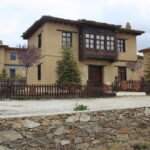Conservation and Maintenance of Earth Constructions: Cases from around the world
Earth as a constructional material – often combined with other naturally occurring or cultivated materials such as reed and straw, dried, compressed and employed in a variety ways – has been used since prehistoric times and is in continuing use across all
inhabited continents. Widely available, affordable, recyclable and quintessentially sustainable, earth buildings have a proven track record in diverse climates. Well suited for passive solar heating and cooling, and providing important benefits in indoor comfort conditions, their reduced energy consumption for constructional processes as well as in occupancy offers a wide range of environmental benefits, including significant reductions in pollution and greenhouse gas emissions. There is a resurgence of interest in earth construction not simply as a heritage resource, whether archaeological sites, vernacular architecture or other, but as a material with an enhanced potential for use today. As such, it is the subject of extensive research both for the conservation of existing structures and realisation in new developments. This presentation traces the historic use and key typologies of earth construction, materials and conservation indicators, and provides examples of contemporary conservation practice and new construction.
Beria Bayizitlioğlu is a graduate in architecture from the Middle East Technical University, Ankara, and a member of the Chamber of Architects of Turkey. She is assistant professor in the Faculty of Engineering and Architecture at Beykent University, Istanbul; previously, assistant professor and postdoctoral researcher at the University of Kent School of Architecture, England. She has organised a series of workshops focused on traditional housing construction and settlements across Western Anatolia; and is the author of numerous articles including the paper ‘Comprehension of the Rural: Ovakent (Adagide), Turkey’ in The Historic Environment: Policy and Practice, vol. 3, No. 2, 2012. Also, on the subject of housing quality and post-occupancy evaluation, the book Insan Mekan Iletisimi (‘Space-Human Communication’) (Edumar, 2009)


